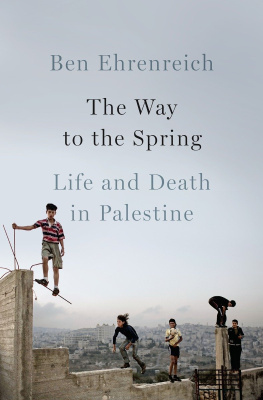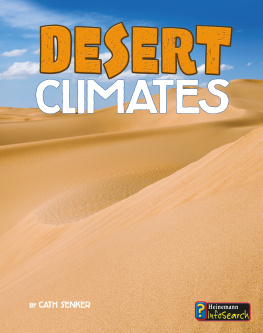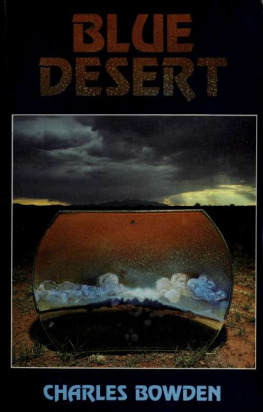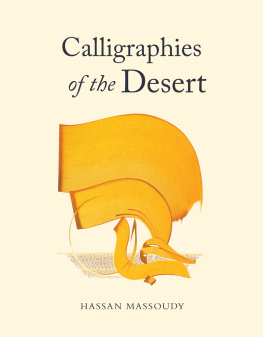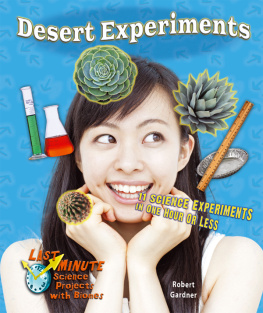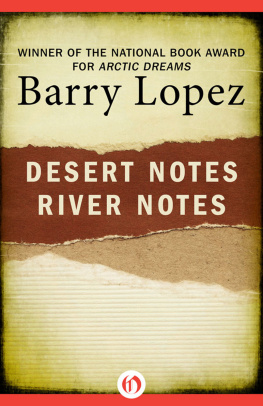Table of Contents
Guide
All books have many authors. This one could not have been written without the love and collective wisdom of my extended, nonbiological family, some members of which appear in these pages, by initial and without: Anthony McCann, Kirsty Singer, Jacob Forman, Sesshu Foster, Dolores Bravo, Kristen Guzman, Angelo Logan, Cesar Palacios-Guzman-Logan, Adam Goldman, Deirdre English, Roberto Lovato, Olivia and Pearl Cuevas-Carle. In Las Vegas, Tayari Jones and Dawn-Michelle Baude helped keep me at least semigrounded. So did the staff of the Black Mountain Institute, where I was a Diana L. Bennett fellow. Without BMIs generosity and support, I would not have had the time and freedom to think these thoughts, much less to write them down. Livi Watson read countless drafts and helped shape my ravings into whatever semblance of readable prose they have achieved. Better than that: she showed me the stars and the spaces between them, and opened up the sky.
Thanks as always to Gloria Loomis and Julia Masnik, to everyone at Counterpoint, and especially to Dan Smetanka. Thanks too to the ghosts that swirl through the Biblioteca de Catalunya and the ones that whisper in the deserts. I trust youll let me know if I got it right this time.
ALSO BY BEN EHRENREICH
NONFICTION
The Way to the Spring: Life and Death in Palestine
FICTION
Ether
The Suitors
The only door out is the door in!
GEORGE M AC DONALD

For L.
and the new arrival
1.
Of an evening the owls come out.
ARTHUR BERNARD COOK
In the third week of November, one year and six days after the election of the Rhino, I went for a walk with two friends. It was late afternoon. The light was soft, the shadows long. We parked the car on a dirt road about a mile from my house, shimmied under the wire that marked the boundary of Joshua Tree National Park, and walked up through a wide sand wash that I had hiked many times before. As it ascended, the wash would become a canyon: walls of lumpy, reddish stone would rise to the east and west, narrowing as the canyon climbed south into the park. We were following in reverse the path the rain had carved over the centuries as it trickled and sometimes raged down from the rocky hills into the flat, sandy basin below.
Not far from there, in late July, a young couple had gone missing. They were kids from the suburbs, but even if you know the desert it isnt hard to lose your bearings. Canyons fork and twist. The landscape plays tricks on the eyes. The light shifts and familiar terrain becomes suddenly alien. The summer had been a mild one, but most days it was still above 105. Search parties and helicopters scoured the area for weeks. The missing couple came up in every conversation I had in town: Maybe coyotes had already scattered their bones, or they had been abducted by some sinister stranger. Perhaps they had simply wanted to disappear.
In mid-October, searchers found them a couple of miles from my house, and maybe a mile from the wash in which my friends and I were hiking. The young womans father led the group that found them. The corpses, the newspapers did not neglect to report, were intertwined, embracing even in death. A few days later the authorities revealed that they had found a pistol at the scene: the young man had shot the young woman before turning the gun on himself. Police didnt believe there was any malice in it. The pair appeared to have gotten lost and, having run out of food and water, chose to avoid a slower death. The fact that they had brought a handgun on a day hike was apparently so normal that few of the news reports considered it worth highlighting.
But the summer had passed, the monsoons had poured down in September, and though no rain had fallen since, the senna and brittlebush were still in bloom, smearing the sides of the wash a brilliant yellow. I dont remember what we were talking aboutmaybe Steve Bannon or the lost hikers or Roy Moore banned from the mall, or the elusive scent of the desert willows that thicketed the floor of the washwhen K., walking ahead of A. and me, stopped. She pronounced a single word: Owls.
They took to the air in a sudden rustling burst, and then went silent. I barely glimpsed the first one: a flash of wide, white wings as it glided by above us, too big a thing to be so quiet. It soared off in a broad arc and disappeared behind a hill to the west. The second one, though, passed low enough that for an instant I could see its flat, tawny face, the mottled white and brown plumage of its belly, those bright, alien eyes. It circled once and flew out of sight to the east.
Eventually we breathed. With all their circling and swooping, K. thought maybe there had been three of them, but I was fairly sure there were just two. We kept walking, the wash narrowing as we went until we had to scramble over boulders to proceed. We turned a bend. The owls were there, perched on a rock. They saw us first and flew off up the canyon. Again they separated, one arcing right, the other left. We thought that was it and picked up the conversation again. I know at some point we talked about Lebanon and Saudi Arabia, Saad Hariris strange flight to Riyadh, Jared Kushners visit the week before. All of that had filled me with a panic that lasted for days, the contours of the next global conflict revealing themselves, requiring only the smallest flame. Who would play the role of the archduke this time? Who would kill him? K. stopped again. The owls had roosted in the rocks ahead of us, as if they were waiting for us there. They flew off and again we watched in silence.
So it went. We scrambled on, following the canyon as it twisted left or right, expecting to see the owls at every bend. Every hundred yards or so we caught up with them and everything we had been saying felt suddenly impertinent, and we fell silent until they flew off and then walked on until we caught up with them again. We talked more quietly now, still surveying the crises of the day, pausing to admire a paper-bag bush in unlikely late-autumn bloom or a particularly bold and healthy cholla. And then the owls shut us up again. We saw them five times in all, maybe six, before they soared off into some more distant canyon and disappeared for good. I knew that we had been annoying them, that they were only trying to avoid us, and its foolish, I know, but this is what humans dowe turn the world into a story and put ourselves at the center of the plotand I found it hard not to imagine, or to want to believe, that they had been leading us onward all along, that they were trying to tell us something, or to show us a path, one that led deeper into the wilderness, away from the highway, away from the car.
Before we said goodbye that night, in the parking lot of the towns one Indian restaurant, the conversation turned to writing. A. and K. are both writers. It was getting harder, we agreed, to muster faith in any of it, to care at all about lit-world battles that had once seemed so important. Or even, in the face of real, planetary disasterglaciers melting, oceans rising, droughts and fires and famines and floodsto care about something we had once confidently called literature. No matter how pointless things may have felt at any given moment, A. said, you could always tell yourself that you were taking part in a conversation, an exchange that stretched back into the immeasurable past and on into a future that you couldnt yet imagine. That was the conceit. Not progress but continuity, at least. You could tell yourself that it was the conversation that mattered, this stream of voices flowing through the centuries, this ancient, almost sacred thing that is bigger and deeper than any of us alone. But what if its going to end soon? What if someone in a generation, perhaps two, will write the very last word? What if the future does not include enough human beings to keep the conversation going? What if it drifts off like a party at the end of the night, with only a few drunks left mumbling in the corners? What if the humans who remain are too busy surviving to tend to the books and the servers? What if literacy has a horizon, and its near? Isnt it all just noise then?
Next page

